How to Build a Sales Pipeline for Your Team
Casey O'Connor
The way you build your sales pipeline provides the foundation for your sales performance.
In short, the sales pipeline is a graphically organized, structured picture of the way prospects and leads move through the buying process. Depending on who you ask, the pipeline may have anywhere from 5 – 7 stages.
That being said, much of the variation is simply semantics — the descriptions of each phase don’t vary too much from business to business.
The health of the sales pipeline directly impacts the strength of your bottom line. Furthermore, each individual stage of the pipeline contributes to its overall effectiveness, and each one should be treated as a unique entity to analyze and optimize.
In this article, we’ll go over everything you need to know about how to build a robust, efficient sales pipeline, including how to determine the various steps and how to engage your team in the process.
Here’s what we’ll cover:
- What is a Sales Pipeline?
- How to Determine Each Step in Your Sales Pipeline
- 4 Ways to Engage Your Sales Team in Your Pipeline
- How Your Sales Pipeline Impacts Your Overall Sales Process
- How Yesware Can Help You Move Prospects Through Your Pipeline
What is a Sales Pipeline?
The sales pipeline is a graphical representation of the sales process. It’s divided into different stages that represent the actions salespeople take to qualify, nurture, or negotiate with leads. 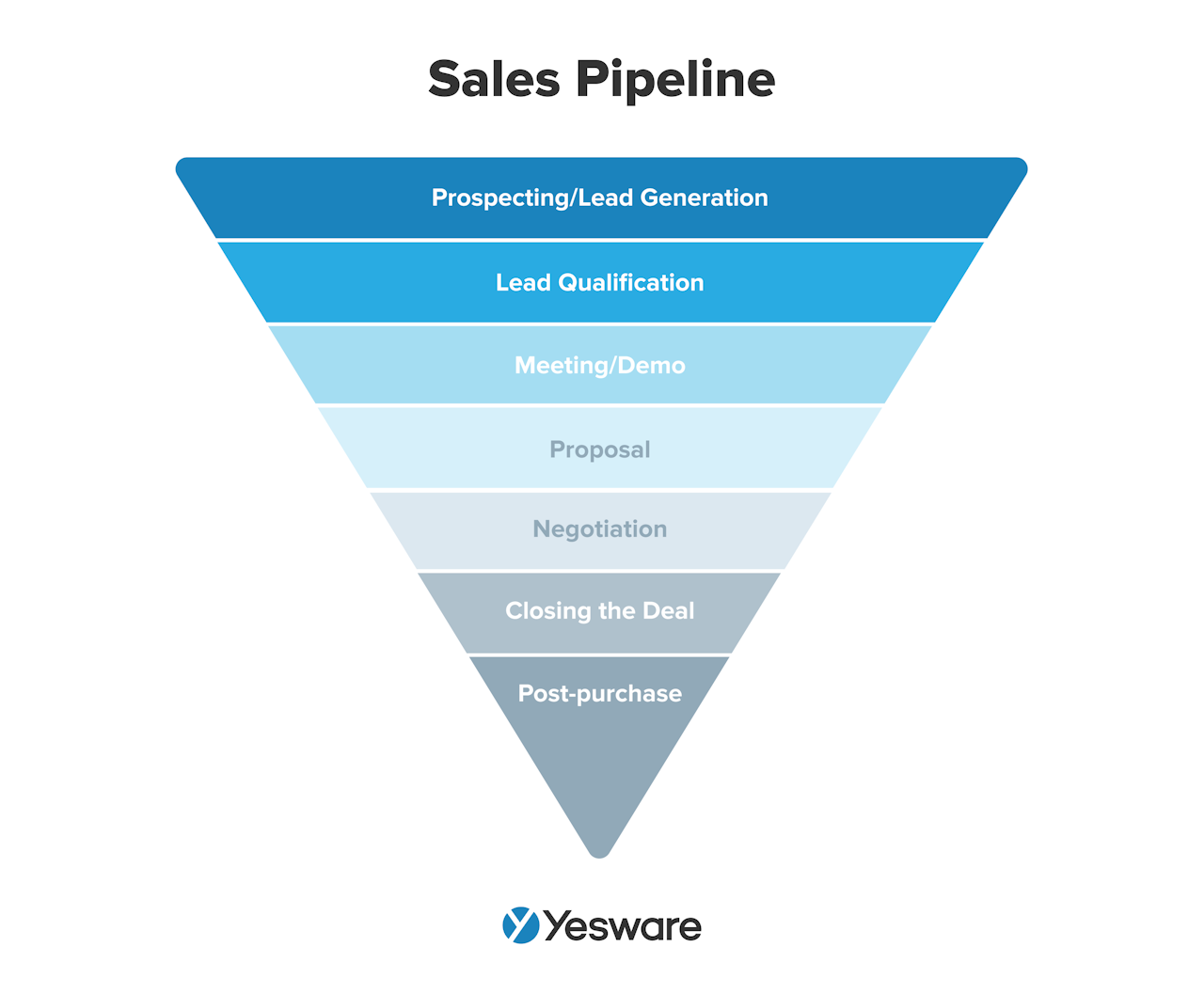 The best sales pipelines are the ones that are intentionally designed to align with the buyer’s journey. Look at the way the pipeline below directly corresponds to the stages of the sales funnel.
The best sales pipelines are the ones that are intentionally designed to align with the buyer’s journey. Look at the way the pipeline below directly corresponds to the stages of the sales funnel.
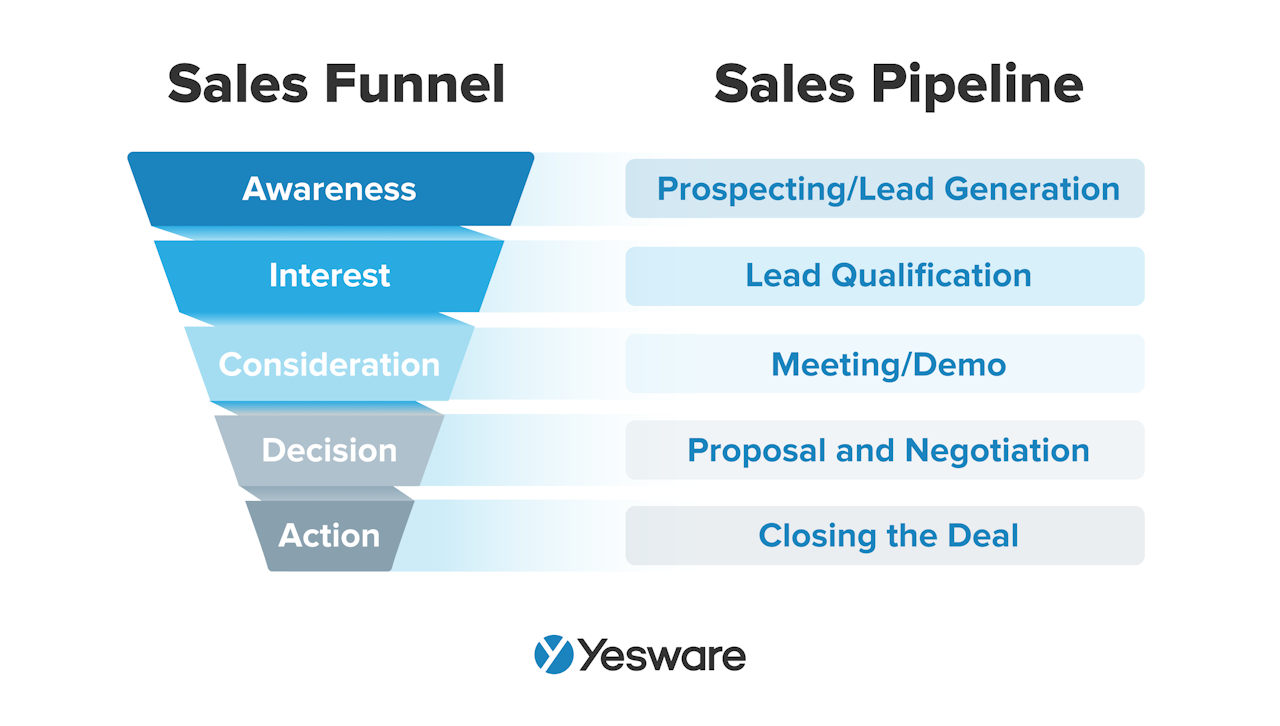
The sales pipeline is more than just a visual representation, though. It’s also the framework that helps sales reps and sales leaders manage the many moving pieces and activities that need to take place in order for deals to close.
Sales reps and managers should collect sales metrics and measure KPIs along every step of the pipeline to optimize performance.
How to Determine Each Step in Your Sales Pipeline
The following is a step-by-step playbook for determining the stages of your own sales pipeline. This blueprint will be especially useful for startups and small businesses, but can also work for larger companies who may need to overhaul their pipeline for any reason.
1. Identify the Target Audience
Before you can begin building your pipeline, your sales and marketing team members will need to collaborate to define the demographics of your target customers. One structured way to do this is with an Ideal Customer Profile (sales ICP).
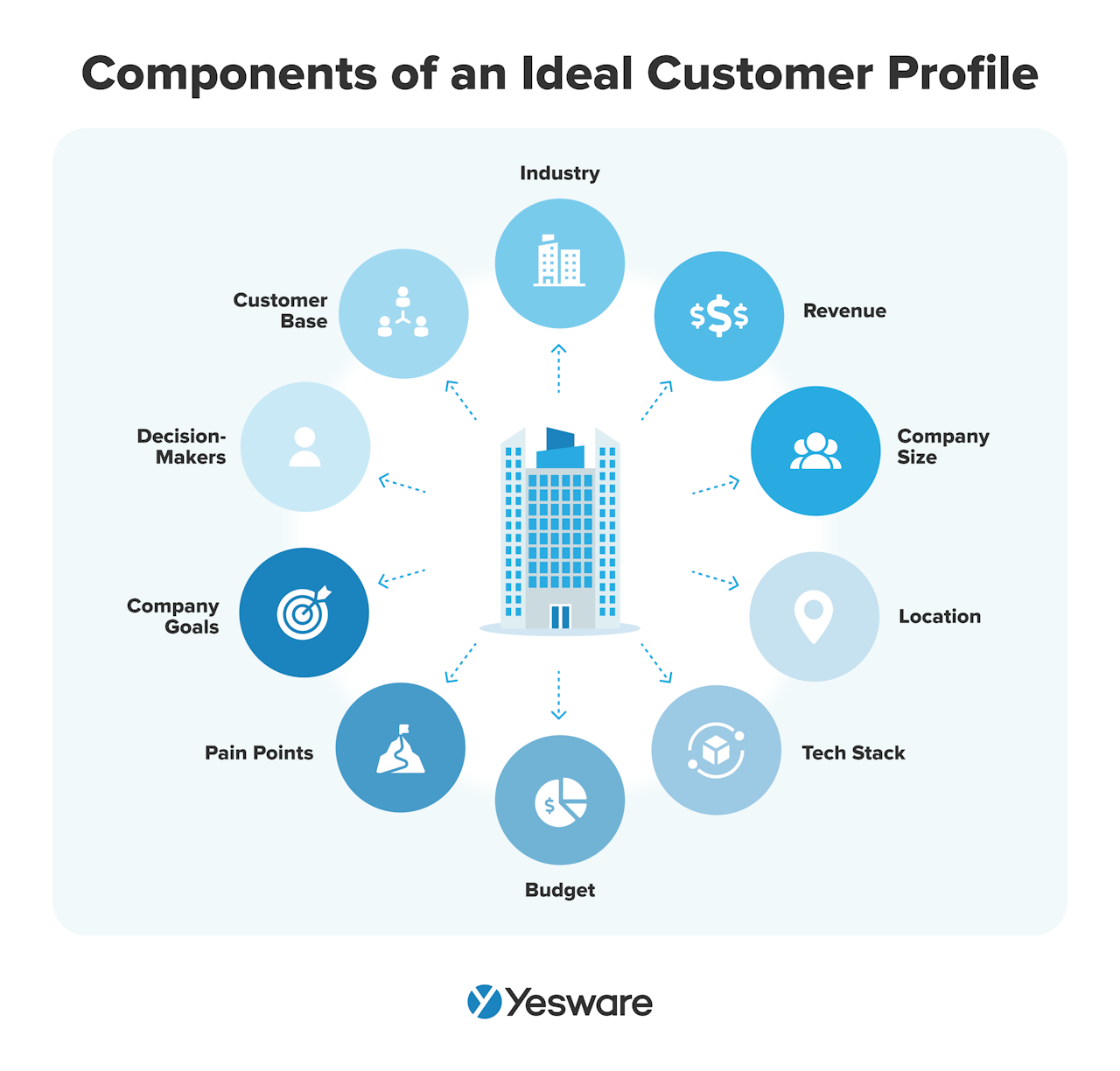
Your ICP will help you identify target accounts, which you can then begin researching in order to connect with the relevant decision-makers. You can build buyer personas for each stakeholder to improve this process.
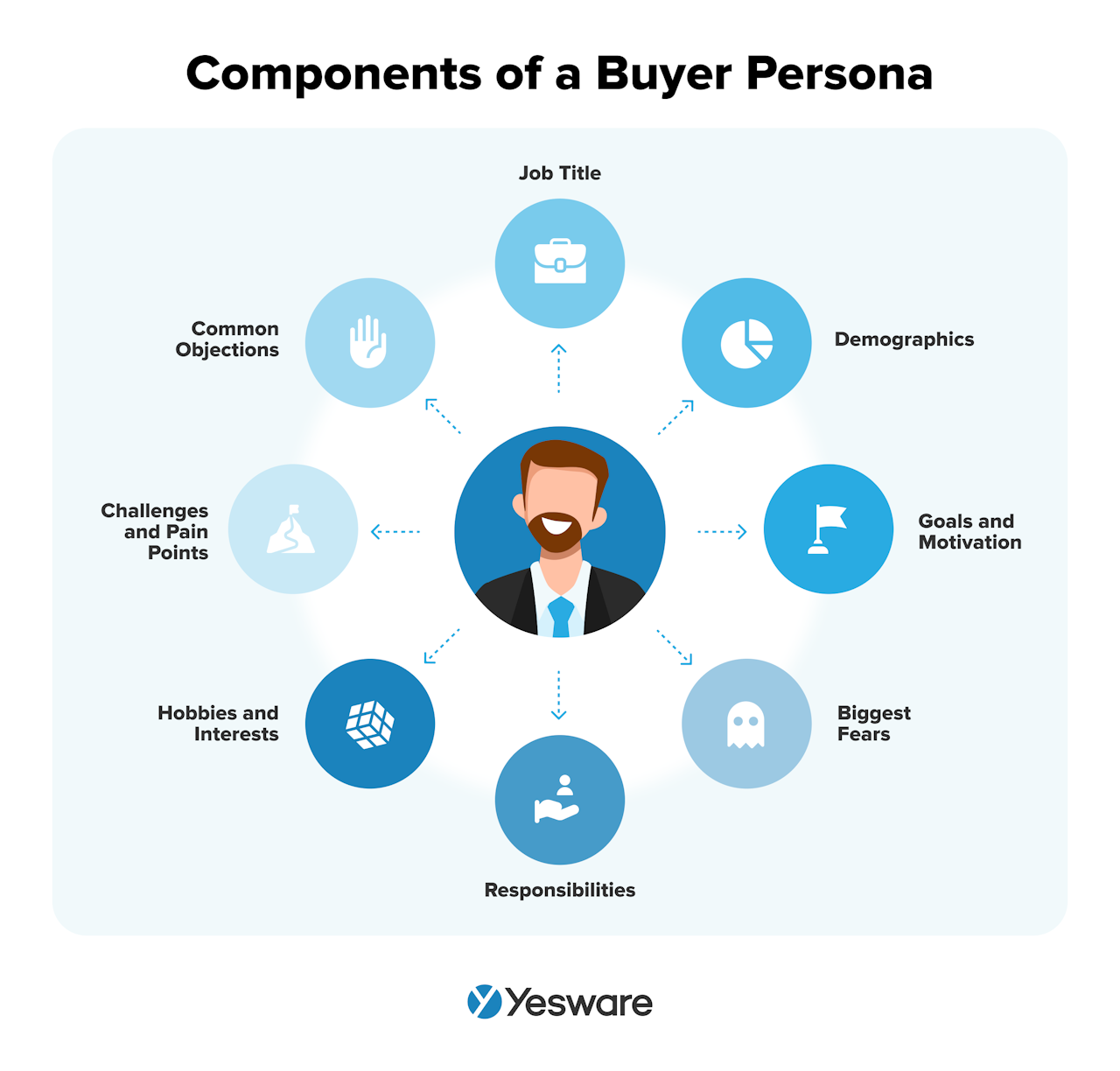
These resources will act as your “North Star” during the prospecting stage of the pipeline. There are many free templates available online to help guide you through these processes.
2. Determine the Ideal Pipeline
Once you’ve defined the parameters of your target market, you can begin defining the pipeline stages.
Your ICP and buyer personas will help your team determine how your unique potential customers move through the sales process, which will ultimately define the stages.
3. Standardize Definitions
It’s important that everyone in your sales organization operates under the same assumptions.
Spend the necessary time with the entire sales and marketing teams to standardize the specific buying signals that indicate a lead has crossed into the next stage. Use common vocabulary and terminology that are mutually agreed upon.
For example, what specific things differentiate a “lead” from a “prospect”? What is considered “post-proposal”? How do you know when a lead is considered “qualified”? Each of these sales terms should be clearly discussed and defined in order to most effectively use the pipeline for growth.
4. Find the Magic Numbers
Now it’s time to reverse engineer the pipeline according to your sales goals. Using the SMART goal framework, work backward to determine how many leads need to flow in through the top of the pipeline in order to meet your goals.
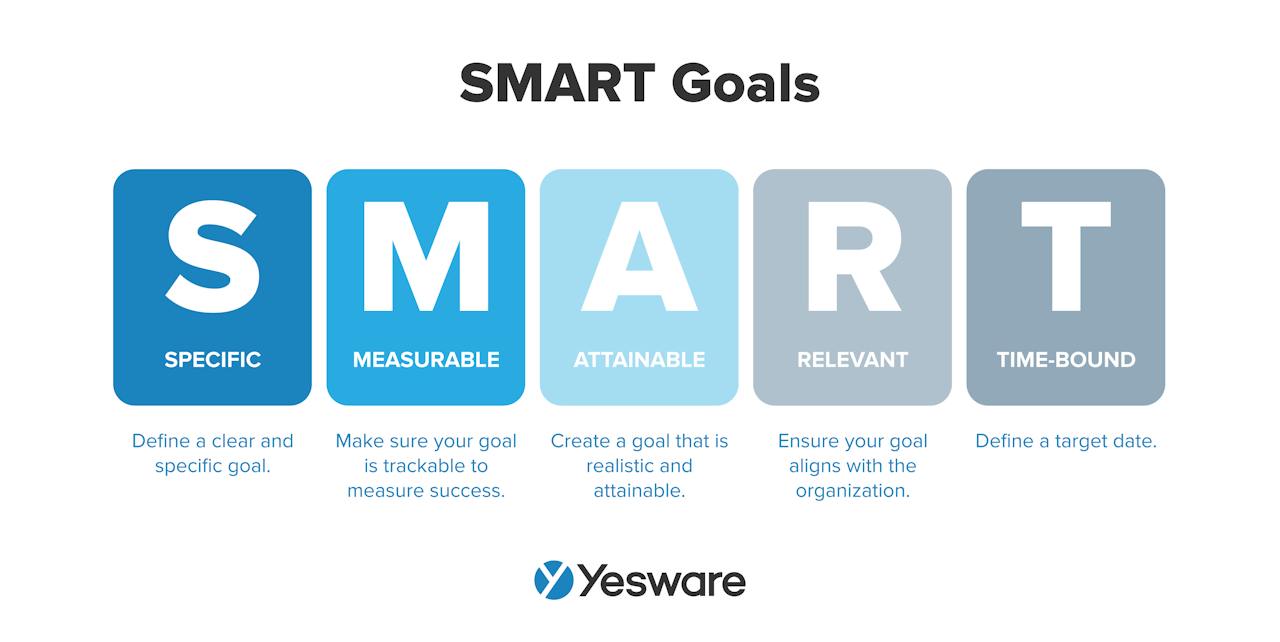
Bear in mind that your team will iterate on this part of the process for some time as you optimize each stage of the pipeline.
5. Generate Demand
With some firm numbers and goals in mind, your sales and marketing teams can plan the marketing strategies you will deploy to attract new leads to your product.
There are a number of ways to generate demand through B2B lead generation strategies.
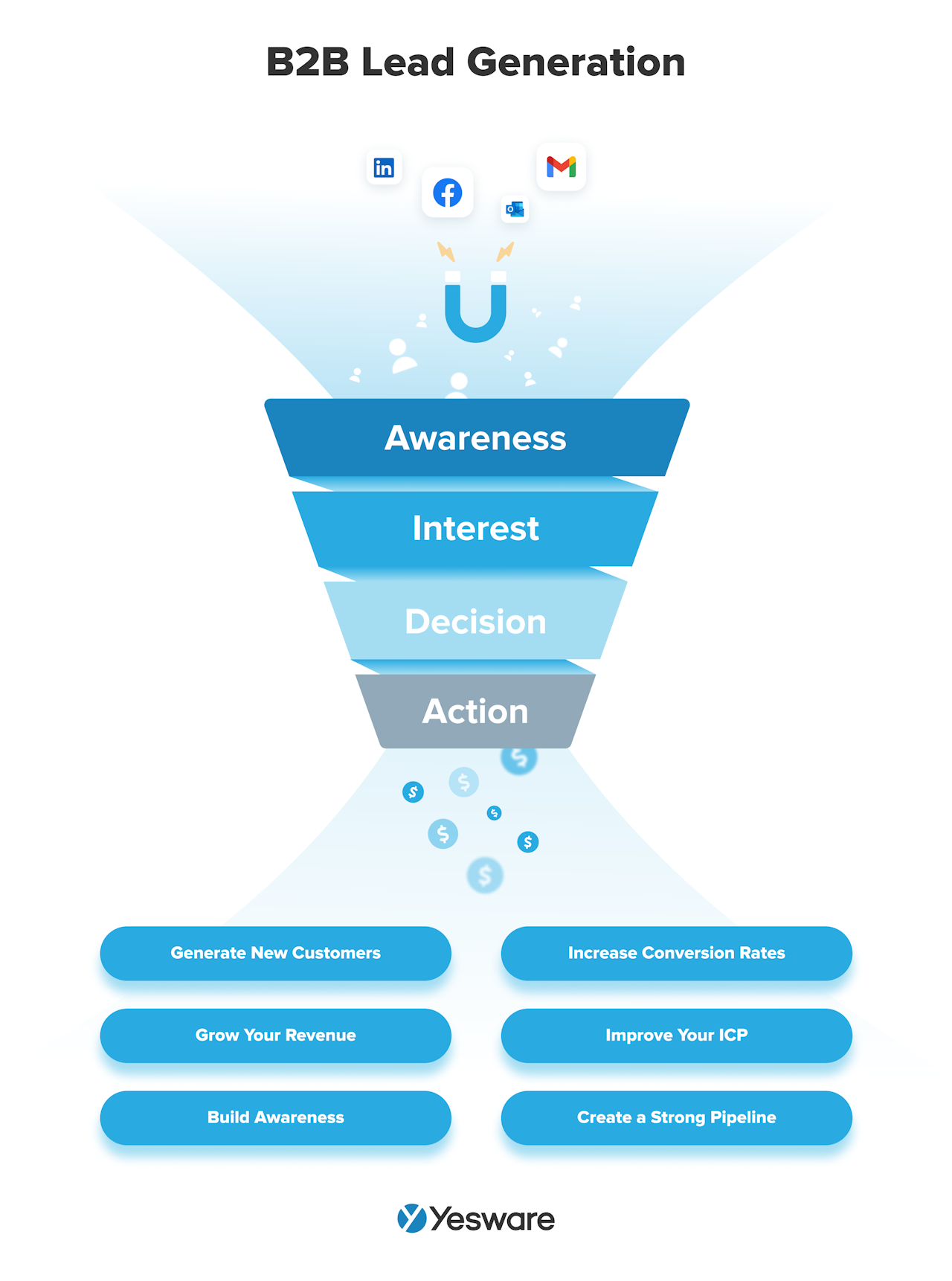
These are not your only options, though. You might opt for content marketing, using LinkedIn or other social media outreach, or even cold calling.
Webinars have also become quite popular in recent years. Ultimately, the sales strategies you choose will be up to your team and the specifics of your sales funnel, but it’s important to specifically plan them out.
Again, this part of the process will likely be a work in progress for some time. As you collect more data on your ideal customer and your sales process, you can further refine your lead generation strategies.
6. Determine Sales Activities
Once the lead generation machine starts turning, you can define the rest of the stages of the pipeline.
Go through each pipeline stage and list out the various tasks, conversations, and follow-ups that need to occur in each. Outline the sales strategies or methodologies that are most effective for each stage. Define the metrics you’ll use to indicate success. Remember to also include a process for cross-sells, upsells, and referrals.
7. Assign Sales Territories And/or Activities
Once your leads are flowing in, and your reps have a repeatable process to follow, you can start doling out specific responsibilities.
Depending on your sales team structure, you may divide your leads by territory, industry, or any other segment. You can then delegate accordingly.
Building an optimized pipeline is hard work. Ultimately, the goal is to attract as many qualified leads to the pipeline as possible but remember that the process will take time. Keep a close eye on the conversion rates of the individual stages to identify any bottlenecks or inefficiencies in the process.
4 Ways to Engage Your Sales Team in Your Pipeline
The sales pipeline, when leveraged properly, is far more than a simple flow chart. It should be a living, breathing document that details how and when your salesforce interacts with potential new customers.
One of the best ways to ensure the sales pipeline doesn’t become just another buzzword is by engaging your salespeople in the process of creating and referencing it.
Here are the 4 best ways to ensure that your sales team is using the sales pipeline to track and manage every opportunity throughout the sales cycle.
1. Include Them in the Creation Process
Sales reps can offer valuable insight into the sales process while leaders create the pipeline. In fact, reps should be actively consulted and included in the process of building a robust pipeline.
Not only will including them in the process make for a more complete document, but it will also make SDRs, AEs, and other reps more likely to trust and rely on the pipeline for optimal performance.
2. Offer Coaching
Sales coaching is quickly becoming the new sales training.
Take a look at some of the subtle differences between the two:
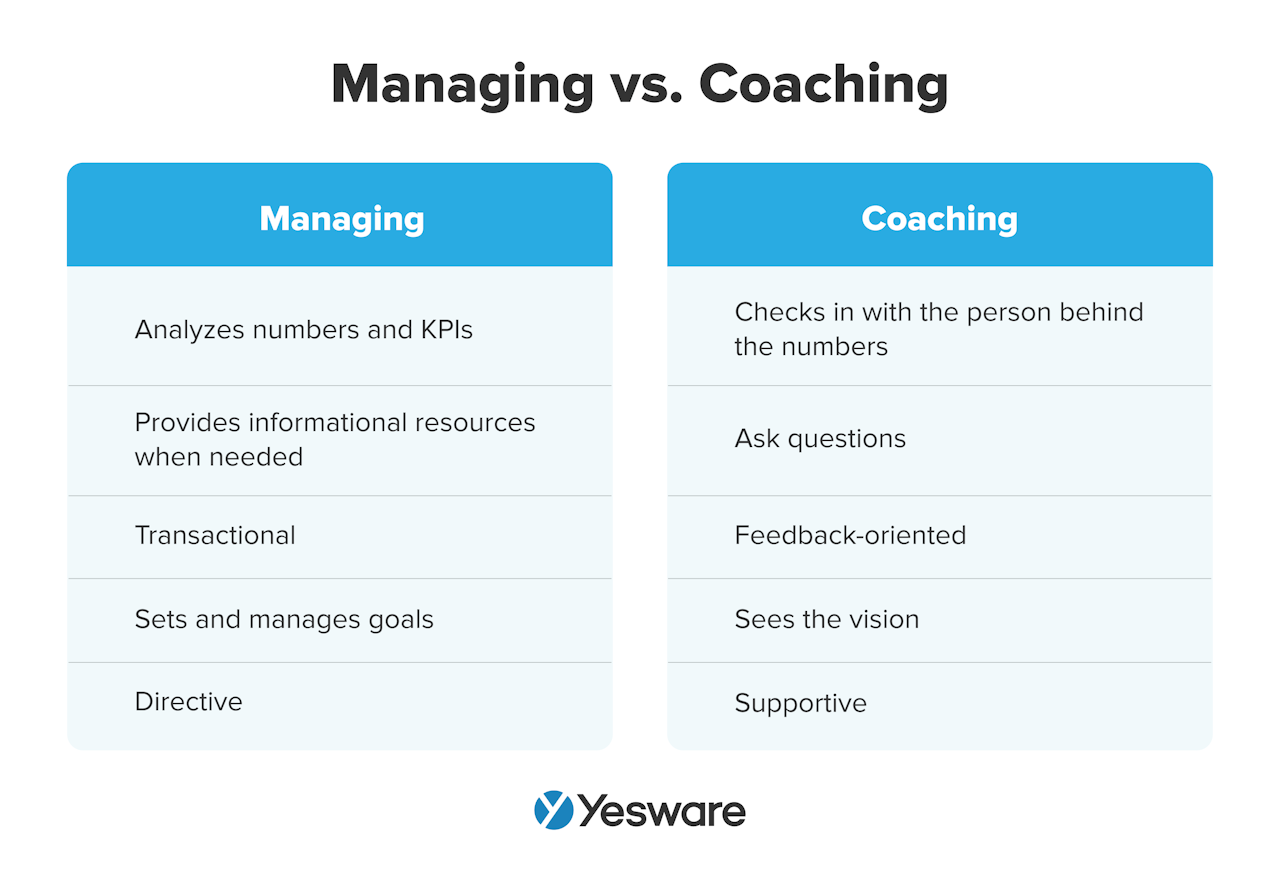
A dynamic, formalized coaching program has been shown to improve win rates for forecast deals.
Personalized, one-on-one coaching is one of the best ways to get reps more engaged and in tune with the sales pipeline.
3. Set SMART Goals
Many sales reps and managers with good intentions and developed skill sets are surprised when they don’t meet their own goals. That’s because goal-setting, in and of itself, is a skill that needs to be mastered.
If you haven’t yet, try setting goals using the SMART goal framework outlined above. The five components of a SMART goal help maximize goal-setter engagement.
4. Automate Whatever You Can
It’s well-known by now that sales reps only spend about 36% of their time performing revenue-generating sales activities. The rest of their time is spent on administrative and other non-selling activities.
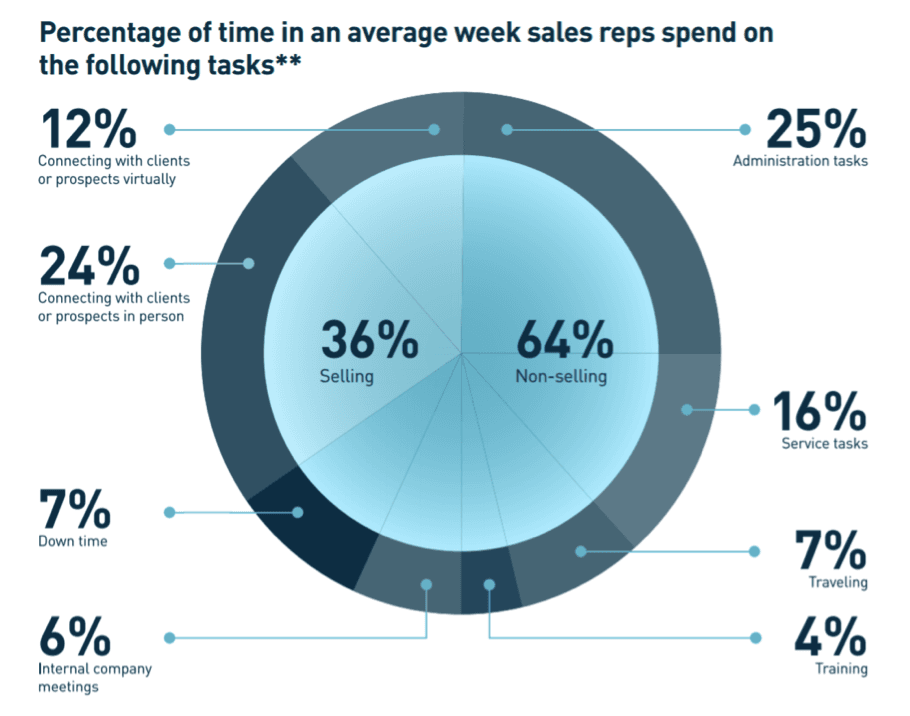
This is a surefire way to achieve sales rep burnout. Sales leaders should aim to automate processes for reps whenever they can, so that reps can focus on qualifying leads, following up, and deploying the actual sales strategies that close deals.
Even something as simple as alleviating day-to-day CRM management can have a big impact on reps’ available time; small steps are better than none, so start today by finding something you can take off your reps’ plate.
Tip: Learn how to manage your pipeline here → Sales Pipeline Management Guide
How Your Sales Pipeline Impacts Your Overall Sales Process
According to Harvard Business Review, businesses with structured pipelines, and a process to manage them, had an average growth rate of 5.3% — a 15% increase over companies who don’t adhere to a pipeline.
Furthermore, HBR found that there were three specific things that a company could do that were shown to lead to 28% higher revenue growth:
- Having a clearly defined sales process
- Spending time analyzing and refining the process
- Training sales managers in pipeline strategies and techniques
In fact, most of the highest-performing sales teams rely on formalized sales structures.
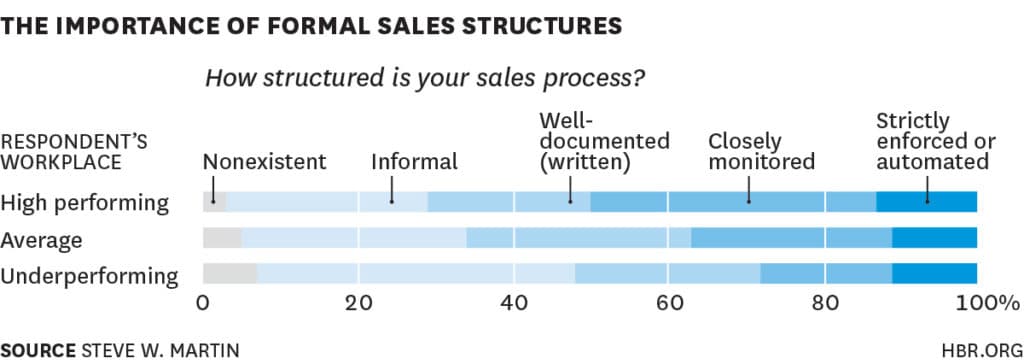
A structured sales pipeline can also improve the following:
- Accurate sales forecasts
- Efficient resource allocation
- Effective sales team management
- Increased deal velocity, volume, size, and revenue
Although developing (and sticking with) a sales pipeline can be tedious and long-term work, the benefits cannot be overstated.
How Yesware Can Help You Move Prospects Through Your Pipeline
Yesware is on a mission to help salespeople close more deals. Our suite of software tools are designed to help your pipeline run more smoothly.
Our email templates help you write, save, and store emails that are proven to convert for each stage.
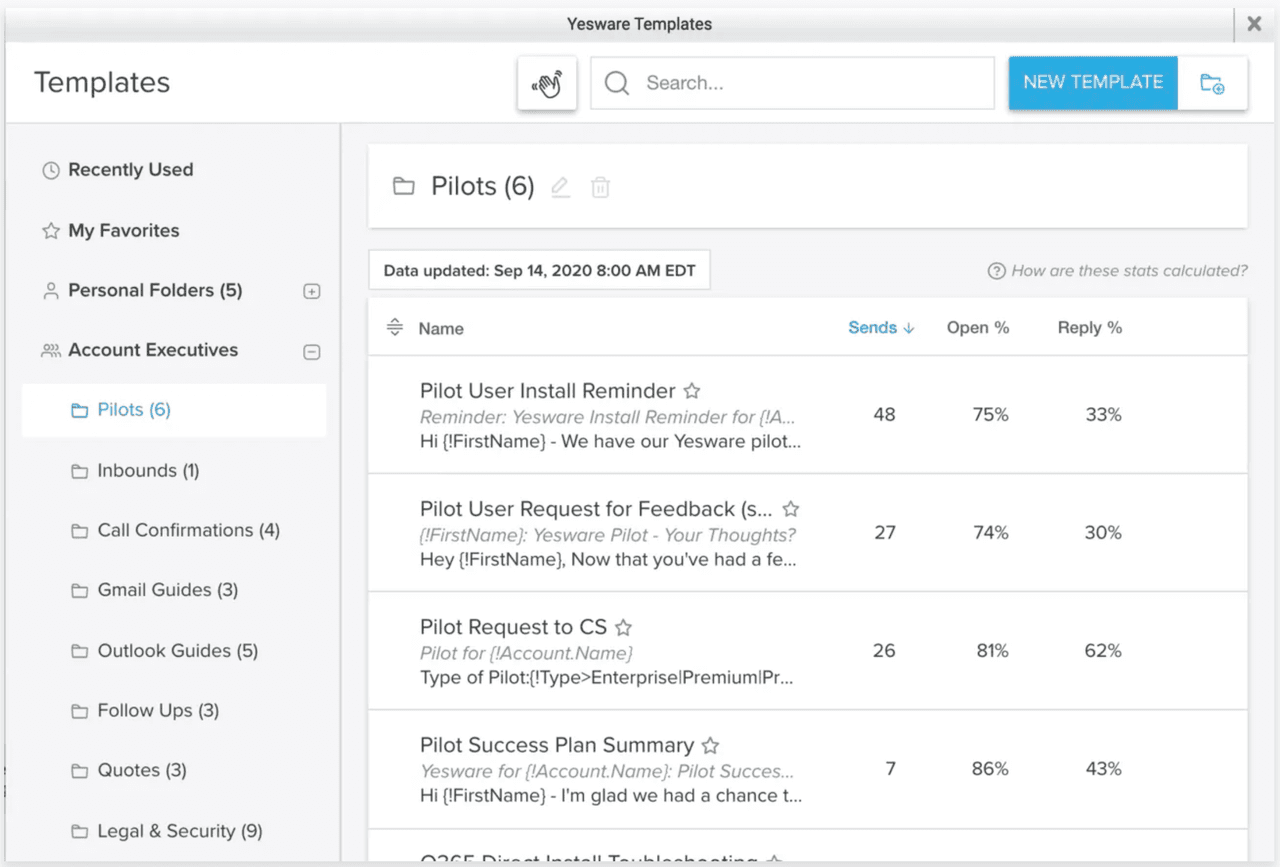
You can find (or create your own) templates for anything, and they personalize in seconds. This will free up some of that time that sales reps could otherwise spend on bonafide sales activities.
The multi-channel prospecting campaigns allow sales reps to work multiple personalized prospecting campaigns simultaneously.
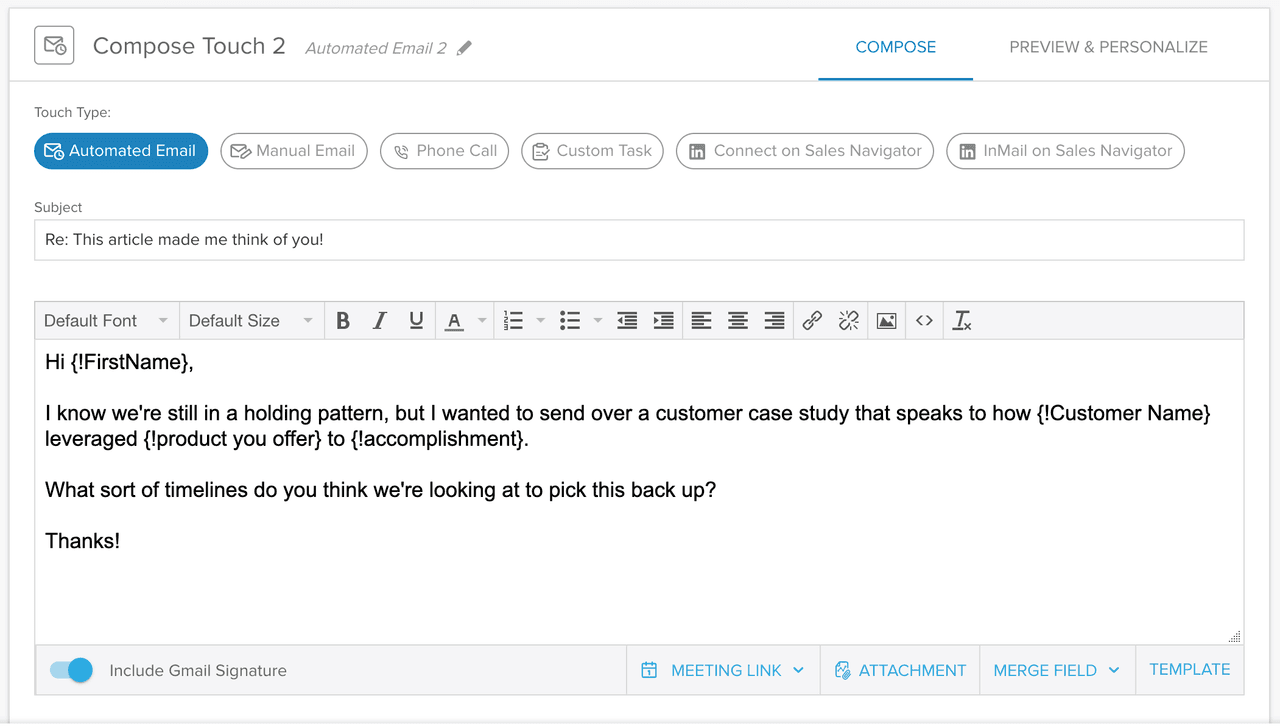
This will help widen the top of the funnel and help reps qualify more leads in less time.
Yesware’s reporting and analytics capabilities help tie everything together by giving sales teams a great snapshot of how effective their campaigns really are.
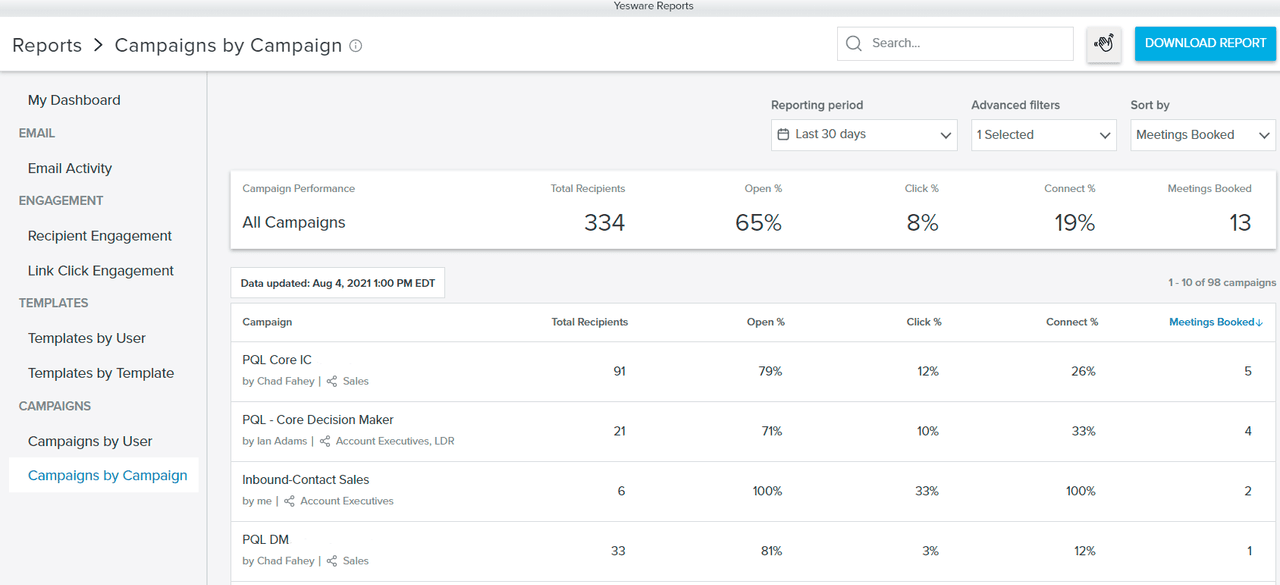
With this tool, you can quickly see which templates and content are reaching your audience, and which need to be reworked.
Do you have a sales pipeline? How effective is it? What strategies can you take away from this article to further optimize it?
Get sales tips and strategies delivered straight to your inbox.
Yesware will help you generate more sales right from your inbox. Try our Outlook add-on or Gmail Chrome extension for free, forever!
Related Articles
Casey O'Connor
Anya Vitko
Melissa Williams
Sales, deal management, and communication tips for your inbox

